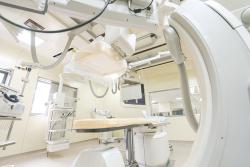 Drawing on specific examples of medical device, biotech, biohybrid, biomaterial and a wide range of other technologies I see at companies of all sizes, shapes and stages, I started an exercise to look at the “competitive advantage” sought by innovators pursuing new products in the big arena of medtech markets.
Drawing on specific examples of medical device, biotech, biohybrid, biomaterial and a wide range of other technologies I see at companies of all sizes, shapes and stages, I started an exercise to look at the “competitive advantage” sought by innovators pursuing new products in the big arena of medtech markets.
 Drawing on specific examples of medical device, biotech, biohybrid, biomaterial and a wide range of other technologies I see at companies of all sizes, shapes and stages, I started an exercise to look at the “competitive advantage” sought by innovators pursuing new products in the big arena of medtech markets. Very clearly, there are companies I consider to fall in the “me, too” category, also known as 510(k), and there are companies whose products are much more PMA in that they are novel and unique, requiring more extensive data to demonstrate a heretofore undemonstrated capability. I was encouraged, as I looked across the types of technologies and their target applications, since a great majority have been developed and are targeted at setting themselves apart in a market in which there is intense scrutiny on cost, which leads to both opportunity and challenge. I do continue to see a disappointing number of products that seem to be the result of innovators who feel that being at least as good as anything on the market is adequate to succeed (hint: it isn’t).
Drawing on specific examples of medical device, biotech, biohybrid, biomaterial and a wide range of other technologies I see at companies of all sizes, shapes and stages, I started an exercise to look at the “competitive advantage” sought by innovators pursuing new products in the big arena of medtech markets. Very clearly, there are companies I consider to fall in the “me, too” category, also known as 510(k), and there are companies whose products are much more PMA in that they are novel and unique, requiring more extensive data to demonstrate a heretofore undemonstrated capability. I was encouraged, as I looked across the types of technologies and their target applications, since a great majority have been developed and are targeted at setting themselves apart in a market in which there is intense scrutiny on cost, which leads to both opportunity and challenge. I do continue to see a disappointing number of products that seem to be the result of innovators who feel that being at least as good as anything on the market is adequate to succeed (hint: it isn’t).
This got me thinking about how innovators, consciously or not, are compelled to consider what their real competitive advantage is in medtech as they pursue product and market development in 2014. This resulted in me distilling the common themes underlying new product development as pursued by the established and emerging companies I am tracking.
A key consideration is that market-aware innovators recognize that their products are going to enter, in most cases, an existing market, which compels them to seek to develop their product from a relative standpoint, meaning its value is going to be judged relative to what is available, if there is any.
These are many of the common themes I see underlying the activities of medtech development. Again, note that, while there may be some absolutes (as in “cure”), most of the products’ performances are considered relative to existing products on the market:
- Allows treatment of patients who otherwise die with the only treatment to delay death or ameliorate suffering.
- Cures the disease
- Restores normal biologic function
- Entirely eliminates the need for surgery
- Eliminates need for reoperation to treat residual disease or address procedure failure rate
- Increases the survival rate as bridge-to, or elimination of need for, organ transplant
- Dramatically increased specificity of pathology-specific treatment, especially for cancer, minimizing the impact to health tissue
- Restores anatomic structural and functional integrity
- Eliminates all complications
- Dramatically shortens recovery time
- Eliminates immunogenicity through highly efficient autologous cell technology
- Reduces the invasiveness of the procedure by requiring fewer or smaller incisions via laparoscopy, transcatheter procedure, natural orifice endoscopy or completely externally (e.g., gamma knife)
- Allows the treatment to be moved from acute care to an outpatient or office-based setting
- Reduces the cost by using a simpler device that can be manufactured less expensively, is less likely to break and require replacement.
- Has a smaller learning curve than existing technologies
- Eliminates the need for later device removal; the product is absorbed or dissolved
This is a cursory view. As I review literally hundreds of medtech companies over the past decade, I can see a large number of common themes, but the ones above represent the bulk of them.
If your efforts are in medtech and don’t touch on one or more of these themes, you have to ask yourself what your chances are of succeeding, even if you product is approved, even if your product gains reimbursement, even if a healthcare delivery system opts to contract with you to use your product.







